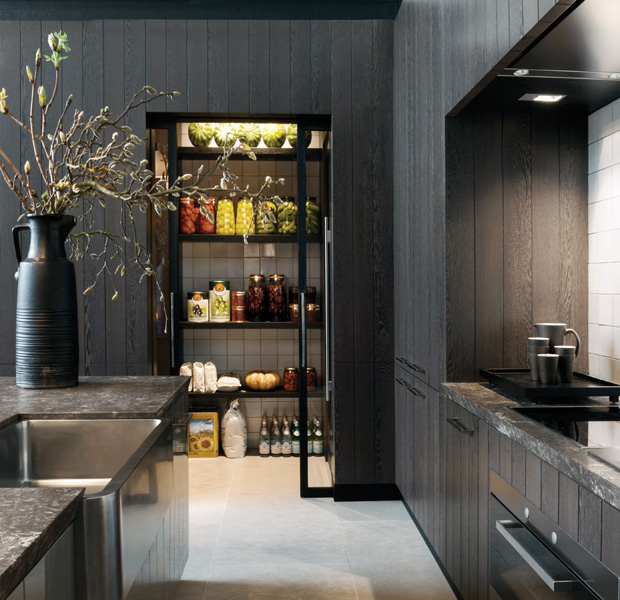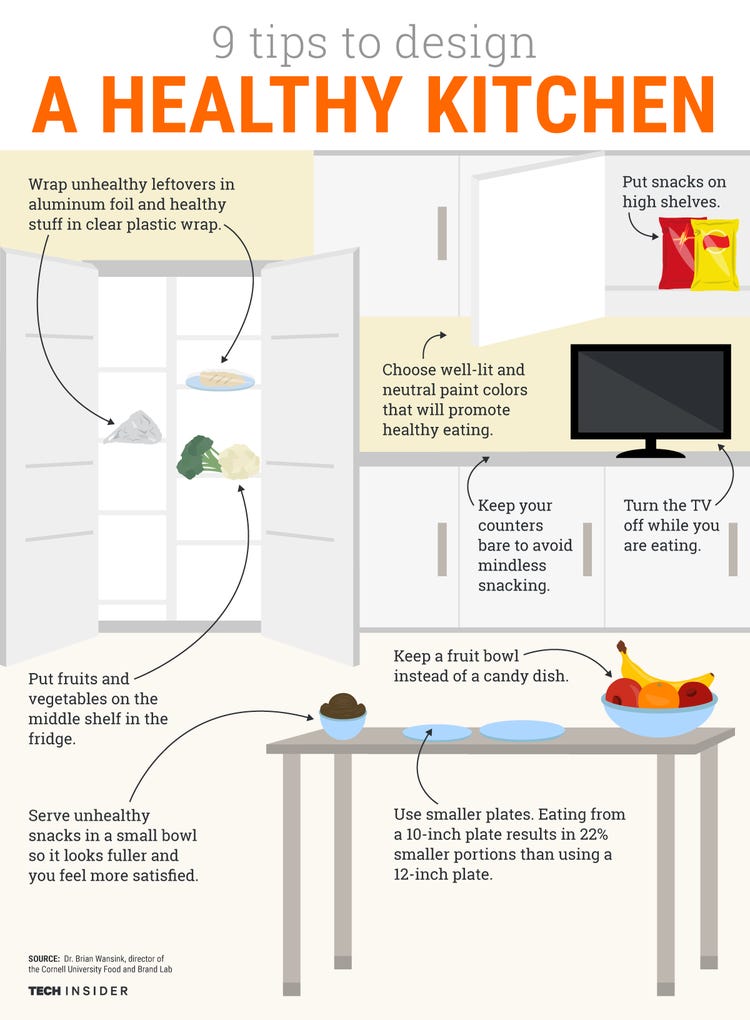A healthy kitchen layout promotes safety, efficiency, and well-being. Designing a layout that minimizes unnecessary movement, maximizes storage, and prioritizes clean and sanitary surfaces is essential for creating a healthy kitchen environment.
With these factors in mind, a well-designed kitchen can help reduce stress, promote healthy cooking habits, and create a space that is enjoyable to use. A healthy kitchen layout is crucial for creating a space that is both functional and safe.
By prioritizing elements such as cleanliness, organization, and efficiency, a well-designed kitchen can make cooking and meal preparation a more enjoyable experience. Whether you’re a seasoned chef or just starting out, a healthy kitchen layout can help you stay on track with your health goals and create a space that supports your overall well-being. We’ll explore some key considerations to keep in mind when designing a healthy kitchen layout.
The Heart Of Home Wellness
The kitchen layout plays a crucial role in promoting health and wellness within the home. The design and organization of the kitchen are directly linked to emotional well-being and overall health. A well-planned kitchen can encourage healthy eating habits and efficiency in food preparation, contributing to a positive impact on physical and mental well-being. The placement of appliances, the use of natural light, and the choice of materials all contribute to creating a healthy kitchen environment. By maximizing functionality and promoting a sense of calm, the kitchen becomes the heart of the home and a supportive space for overall wellness.
Maximizing Natural Light
Maximizing natural light in the kitchen has numerous benefits. Sunlight not only creates a welcoming and warm atmosphere, but it also helps save energy. Cooking in natural light can improve mood and reduce eye strain. Strategies to enhance light include using light-colored paint on walls, installing reflective surfaces, and strategically placing mirrors to bounce light. Additionally, choosing sheer window treatments and keeping windows clean can maximize natural light. Consider adding skylights or enlarging existing windows to bring in even more sunlight. With these simple adjustments, you can transform your kitchen into a brighter and more inviting space.
Ergonomic Kitchen Design
When designing a healthy kitchen layout, it is important to prioritize ergonomics. By optimizing the layout for movement, you can create a space that is functional and promotes easy navigation.
One key aspect of an ergonomic kitchen design is choosing the right kitchen furniture. Selecting furniture that is the appropriate height and size for the user can help prevent strain and promote proper posture. Consider adjustable height countertops and cabinets to accommodate individuals of different heights.
In addition, organizing your kitchen in a way that minimizes excessive movement can improve efficiency. Place frequently used items within easy reach and group similar items together. This will reduce the need for unnecessary bending or reaching, making your kitchen tasks easier and more enjoyable.
Overall, when creating a healthy kitchen layout, keep ergonomics in mind. By optimizing movement, choosing the right furniture, and organizing effectively, you can create a space that is both functional and comfortable to work in.
Zoning For Efficiency
Creating Functional Kitchen Sections
A well-designed kitchen layout is essential for promoting efficiency and maintaining a healthy cooking environment. By strategically zoning different areas of the kitchen, you can optimize workflows and enhance productivity.
Start by dividing your kitchen into functional sections, such as food preparation, cooking, and cleaning areas. This allows for smoother transitions between tasks and reduces the time spent moving around the kitchen.
Consider placing frequently used items, like cutting boards and knives, within easy reach of the food preparation area. Keep cooking utensils and spices near the stove for quick access. Create a designated space for cleaning supplies near the sink.
Streamlining workflows in your kitchen not only saves time but also reduces the risk of accidents and promotes a healthier cooking environment. With a well-planned layout, you can create a space that is both efficient and enjoyable to work in.
Material Matters
Discover the importance of a healthy kitchen layout in our blog post “Material Matters. ” Learn how to optimize your kitchen design for a more efficient and enjoyable cooking experience. Create a space that promotes wellness and supports your healthy lifestyle.
| Material Matters |
|---|
| Selecting Non-Toxic Building Materials |
| When it comes to creating a healthy kitchen, selecting non-toxic building materials is crucial. Materials such as formaldehyde-free cabinets, zero-VOC paint, and non-toxic flooring can help improve indoor air quality and reduce the risk of respiratory problems. Look for materials that have been certified by third-party organizations, such as GreenGuard and Cradle to Cradle, to ensure they meet strict health and environmental standards. |
| Durable Surfaces for Healthy Cooking |
| Another important aspect of a healthy kitchen layout is selecting durable surfaces for cooking. Materials such as stainless steel, quartz, and granite are popular choices for countertops as they are easy to clean, resistant to bacteria growth, and can withstand high temperatures. Avoid porous materials such as marble and wood, as they can harbor bacteria and require more maintenance. By selecting non-toxic and durable materials, you can create a healthy kitchen that promotes a safe and clean cooking environment for you and your family. |
Smart Storage Solutions
Maximizing storage space is crucial for a healthy kitchen layout. Accessible storage ideas can help prevent clutter and stress. Consider installing pull-out drawers and shelves for easy access to items. Utilize cabinet doors by adding hooks or racks to store frequently used utensils or spices. Use clear containers for dry goods and label them for quick identification. Keep countertops clear by hanging pots and pans or using a hanging rack. Take advantage of vertical space by installing wall-mounted shelves or a pegboard for hanging tools. By implementing these smart storage solutions, you can create a functional and organized kitchen that promotes healthy cooking habits.
Incorporating Greenery
When designing a healthy kitchen layout, incorporating greenery is essential. Indoor plants not only add a touch of natural beauty but also improve the air quality inside your kitchen. Some plants, like the snake plant and peace lily, are known to purify the air by removing toxins. They can help create a fresh and clean environment for cooking and dining.
In addition to improving air quality, herb gardens are a great way to infuse fresh flavors into your dishes. Having a small herb garden in your kitchen allows you to easily access and use herbs like basil, mint, and rosemary while cooking. Not only do they add a burst of flavor to your meals, but they also provide a visually appealing element to your kitchen space.
| Indoor Plants for Air Quality | Herb Gardens for Fresh Flavors |
|---|---|
| Snake Plant | Basil |
| Peace Lily | Mint |
| Spider Plant | Rosemary |

Tech And Appliances For Health
In a healthy kitchen layout, incorporating advanced appliances can make a significant difference in promoting healthy eating habits. These appliances are designed with the latest technology to enhance cleanliness and provide convenience for a healthier lifestyle.
One of the key aspects of a healthy kitchen is maintaining cleanliness. Advanced appliances such as self-cleaning ovens, touchless faucets, and built-in steam sterilizers for utensils can help ensure a hygienic cooking environment. These innovations eliminate the need for harsh cleaning chemicals and minimize the risk of cross-contamination.
Moreover, smart appliances equipped with sensors and timers can assist in meal preparation by ensuring accurate cooking times and temperatures. This not only helps retain the nutritional value of the food but also prevents overcooking or undercooking.
Furthermore, appliances like air purifiers and water filters can play a vital role in providing clean and fresh air and water, respectively. These additions contribute to a healthier kitchen environment, reducing the presence of pollutants and contaminants.
By incorporating these advanced appliances into your kitchen layout, you can create a space that promotes cleanliness, convenience, and ultimately, healthier eating habits.
Maintaining Clean Air
When designing a healthy kitchen layout, it is important to prioritize maintaining clean air. This can be achieved through the implementation of effective ventilation systems and the use of air purifiers. Proper ventilation helps to expel cooking fumes and reduce the presence of airborne contaminants, while air purifiers can further enhance indoor air quality by capturing and eliminating particles and odors. Additionally, incorporating natural ventilation options, such as windows and skylights, can also contribute to a fresher kitchen environment. By reducing contaminants and odors in the air, a kitchen can become a more pleasant and healthy space for both cooking and socializing.
Color Psychology In Kitchen Design
When designing a healthy kitchen layout, color psychology plays a crucial role. The choice of colors in the kitchen can significantly impact appetite and mood. Warm colors like red and orange can stimulate appetite, while cool colors such as blue and green can create a calming atmosphere.
For a calming atmosphere, consider using color palettes with soft blues, greens, or neutral tones. These colors can help create a serene and tranquil environment in the kitchen, promoting relaxation and well-being.
Sustainable Practices
When designing a healthy kitchen layout, it is essential to incorporate sustainable practices. This includes using energy-efficient appliances to minimize electricity consumption. Additionally, implementing waste reduction strategies such as composting and recycling can significantly contribute to a healthier environment.


Frequently Asked Questions
How Do You Organize A Healthy Kitchen?
To organize a healthy kitchen, follow these tips: 1. Start by decluttering and getting rid of unhealthy items. 2. Keep healthy foods visible and easily accessible. 3. Use clear containers for storage and label them properly. 4. Stock up on healthy staples like whole grains, fruits, and vegetables.
5. Practice good food safety habits and regularly clean your kitchen.
What Is The Most Efficient Kitchen Layout?
The most efficient kitchen layout is the “work triangle” layout. This layout places the stove, sink, and refrigerator in a triangle shape, allowing for easy movement between them. It maximizes efficiency and minimizes the distance traveled between the three main work areas.
What Is Healthy Kitchen Concept?
The healthy kitchen concept promotes a nutritious and balanced approach to cooking and eating. It focuses on using fresh ingredients, limiting processed foods, and preparing meals in a way that retains their nutritional value. By prioritizing health, this concept aims to support overall well-being and prevent chronic diseases.
How Should Your Kitchen Be Laid Out?
Your kitchen layout should prioritize functionality, with easy access to key areas like the sink, stove, and fridge. Ensure ample counter space and storage, and consider the work triangle between these three focal points. A well-organized layout enhances efficiency and workflow in the kitchen.
Conclusion
A well-designed and organized kitchen layout is essential for maintaining a healthy lifestyle. By prioritizing functionality, cleanliness, and accessibility, you can create a space that promotes efficient meal preparation and encourages healthy eating habits. Incorporating elements such as ample storage, proper lighting, and ergonomic design will not only enhance your cooking experience but also contribute to a healthier and happier home.
So, take the time to plan and optimize your kitchen layout for a healthier future.

